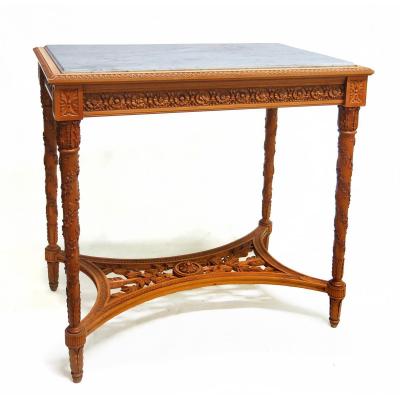Period: 1897
Origin : France, Limoges
Materials : Enamel on copper and oak frame.
The painted enamel: The copper support, entirely covered with enamel, disappears beneath the vitreous material. The colors, applied in superimposed layers, are juxtaposed and can blend together.
Dimensions Frame
Height : 31 cm
Width : 27 cm
Enamel :
Height: 20.5 cm
Width: 16.5 cm
The rediscovery of enamel in the 19th century, after a hiatus of several decades, stemmed from a renewed taste for ancient art. The early stages of historical research and the activity of the antiques market mutually reinforced each other, while also fostering the emergence of restorers and the appearance of forgers. 19th-century enamels, with their meticulous technique, often represent faithful imitations of the Renaissance, particularly in the realm of grisaille. However, some artists would soon abandon traditional techniques to explore new ways of working with the material. By the end of the century, enamel naturally found its place within the new enthusiasm for the decorative arts. In 1889, the Universal Exhibition in Paris showcased several hundred enamels. This century also presents the paradox of seeing the art of enameling rehabilitated within Parisian decorative arts at the very moment when, thanks to the knowledge of scholars from the Limousin region and Paris, it was being established as a defining element of cultural heritage. The general public then discovered, through a network of national and international exhibitions whose pace is still astonishing today, the delicate effects of this reimagined decorative art.

































 Le Magazine de PROANTIC
Le Magazine de PROANTIC TRÉSORS Magazine
TRÉSORS Magazine Rivista Artiquariato
Rivista Artiquariato